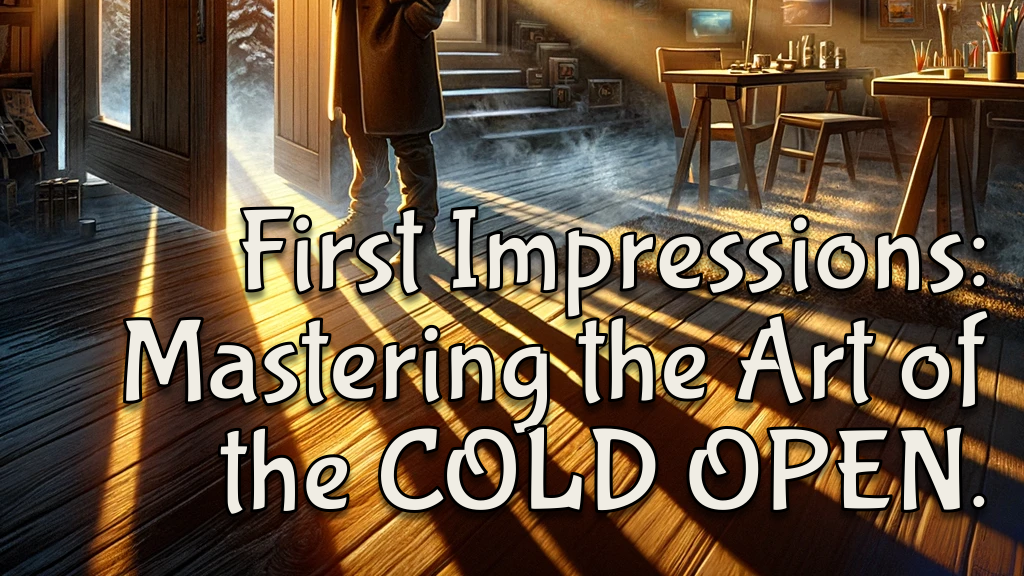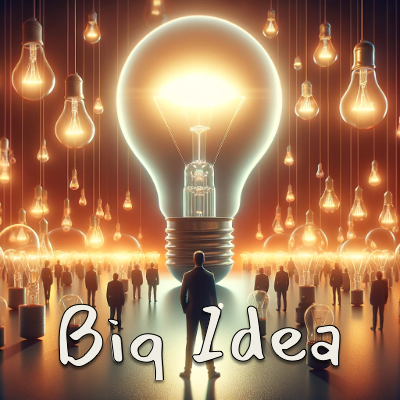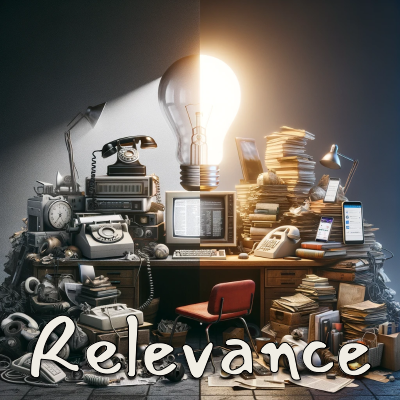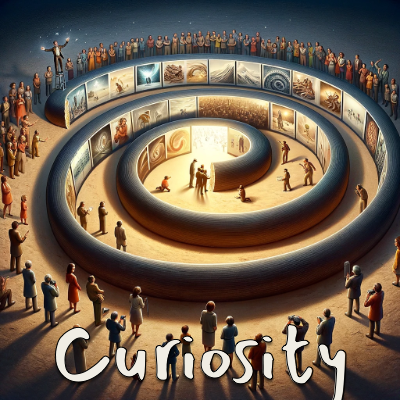First Impressions: Mastering the Art of the Cold Open
Getting started with new content is tough for me; I like to grasp the big idea first. However, the beginning needs to grab attention, so I focus on perfecting the opening with the 'Cold Open' technique. It's not just for TV; corporate videos can benefit too.

Are you a podcast listener? I say 'listener' but my reference to podcasts here is simply any audio or video content you may be creating. Podcasting has grown so quickly. As a person who really enjoys working on their craft, this has been great to watch for ideas.
One area I have been thinking about concerns how a show starts. I have always believed that the first few minutes with an audience can make or break your show. They are deciding if they should stick with you or go somewhere else. Every episode will have unique objectives associated with it, but it's all useless if nobody sticks around to hear it. This is why we want to carefully structure the opening of our episodes to maximize the likelihood of keeping audience attention.
Three key objectives
When crafting the opening of my projects, I always focus on three crucial goals. First, I aim to establish and introduce the essence of the show, (the big idea). The opening should convey to the audience that they're in capable hands, assuring them of my expertise and confidence in navigating the subject at hand, (relevance). Lastly, sparking curiosity is essential, though it's often interwoven throughout the narrative. My goal is to ignite a sense of intrigue that draws the audience in, compelling them to engage with the longer content.

ONE: What's the big idea?
A big idea is the one key message you want to communicate.
It contains the impetus that compels the audience to set a new course with a new compass heading.
Three components of a big idea
1. Point of view: The audience needs to know your point of view, your perspective. It does not need to be completely unique, it just needs to be your angle on a subject, NOT a generalization.
2. Stakes: The big idea should articulate the reason why the audience should care enough to adopt your perspective. Conveying what's at stake helps the audience recognize the need to participate. Without a compelling reason to move, the big idea falls flat.
3. A complete sentence: When asked the question: 'What's this show about? most people respond with something like
'it's about Full Stack Observability'
or
'it's a chat with the developer.'
(These are NOT big ideas).
Avoid this trap by putting your big idea into complete sentence so that...
- You have crystallized your main concept into a clear and concise statement.
- It has a noun and a verb.
- It's easier for the audience to grasp and remember.
- That your idea is actionable and focused
It's even better when the word 'YOU' is used in the sentence, that ensures that it is written TO SOMEONE. Carefully crafting and adjusting the big idea throughout the development process is crucial. This approach ensures your content remains focused and cohesive, linking all elements seamlessly.

TWO: Establish Relevance
When something is considered relevant, it matters to a specific audience and is connected to the subject at hand. A good opening segment allows you to signal your relevance, often so the audience can self-select.
This might already be covered in your main idea, so there's no need to overdo it. If your main message is: "VMware customers, like yourself, are now confronted with urgent and challenging decisions as Broadcom speeds up changes," it resonates with a broader audience interested in VMware and virtualization at a general technical level. In contrast, "Learn how to securely transition your VMs from VMware to an open-source hypervisor with our detailed guide, steering clear of hazards such as data loss and downtime," targets a more technically savvy audience who likes lots of words.
One benefit I have is that I operate in a narrow niche of networking and related communication technology. I have lived with this audience for many years, yet every episode requires that I think closely about the outcomes we are targeting and how do we best speak with the audience that needs to hear this.
When content is relevant, it establishes trust with the audience, positions the creator as an authoritative figure, and increases the likelihood of engaging the right audience.
Relevant content not only attracts customers but also fosters brand loyalty and credibility.

THREE: Create Curiosity
An open loop, in the context of storytelling and content creation, is a technique used to create curiosity and maintain audience engagement by introducing a question or a scenario without immediately providing the resolution or answer. This creates a sense of suspense or anticipation, as the audience is left wondering what will happen next or how the issue will be resolved. When a TV show ends an episode with a big unanswered question that makes you want to watch the next one, that is an open loop..albeit at the end, (cliffhanger). By not closing the loop immediately, we encourage the audience to stay engaged, as they are naturally inclined to seek closure and resolve the uncertainty created by the open loop.
Be careful. These are easy to abuse. Make sure you will deliver on anything that you 'tease' about. (Be careful when marketing is making title and description decisions for content they may not fully understand or have even consumed themselves).
The key is to make the opening segment as engaging and intriguing as possible without giving away too much. You want to create enough curiosity to keep viewers watching without satisfying their curiosity too soon.

🩲 A brief on brevity.
I struggle with brevity. It takes me four times as long to write half as much. But it's important to keep your opening segments brief. Ensure the opening is concise and to the point, so you don't lose viewers' attention. My interview style shows run at least 30 minutes these days. (TechWIseTV used to have multiple segments within an hour-long show). You want to keep your opening run time to something less than 4 minutes with 2 probably being ideal.
Scripting is the most cost-effective production tool at your disposal. Writing is thinking. Once you have written it down, you can check these required items before you spend time and money recording. You can use the word count to calculate how long it will run when recorded to ensure you are as brief, punchy and effective as you can be.
These don't have to be complicated. A well-crafted cold open can grab the viewer's attention and communicate the tone and theme of the episode, making it a vital and dynamic entry point to your content.
A couple of my examples
Doodle Boy
This was an interesting project for Webex. I originally interviewed 'Doodle Boy' without having any real idea how the content would be used. I ended up writing what feels a bit like a local news 'general interest' piece. It is a very short video that does contain some elements of a good opening. I used a pull quote from later in the interview to drop us 'in media res,' a technique that involves beginning a narrative at a crucial point of action, then later revealing the events leading up to that point.
Doodle Boy shows off his custom Webex creation
WWT Research Series
The next few examples are the opening segments I created for our WWT Research Series. These are pulled out as promo videos with the full version available at wwt.com with a free registration.
AI Powered Digital Assistants
- Watch the full show on the WWT platform: "Develop a Framework for Building AI-Powered Digital Assistants"
WWT Research series presents AI Powered Digital Assistants
Data Center Priorities 2024 - Cyber Recovery
Watch the full show on the WWT platform: "Unbreakable Shields: Fortifying Data and Bouncing Back from Cyber Attacks."
WWT Research series presents Data Center Priorities for 2024, number 2 Cyber Recovery
Write the beginning at the end.
When crafting a show, I tend to delve into the middle before tackling the beginning. This approach allows me to fully grasp the topic and determine the best way to present it.In the realm of pre-recorded content, I prioritize recording interviews before scripting the opening or closing segments. This method enables me to set up the show with precision and incorporate guests' quotes to pique curiosity from the start.
At the end of the day, don't overthink it...but don't leave these out either.
Remember that these narrative hooks are more than just attention-grabbers.
They're your first and perhaps most crucial opportunity to engage your audience, setting the tone, theme, and direction of your content. By leveraging questions and creating momentum right from the start, cold opens not only intrigue viewers but also establish a compelling reason for them to stay.
Incorporating a narrative structure into your cold opens can transform your corporate videos from mere messages to memorable stories. Whether you're crafting a corporate video or any other content, mastering the art of the cold open can make all the difference in capturing and sustaining your audience's interest.
We're in this together.
Robb

